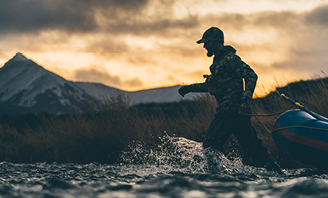
Really, spring is just a great time to clean your gear in general. It’s possible that you’re the type of hunter that cleans up as soon as hunting season ends. But if you use your gear a lot, you’ve probably got a few firearms and optics that could use some TLC. So let’s get to it.
Take a look at your riflescopes, binoculars, rangefinders, spotters—everything. Clear away dirt or any other sediment that may still be leftover from your last trip into the backcountry. That makes it far less likely to sneak into places where it’s not meant to be, like the adjustment ring on your spotting scope or the eyecup of your binocular. Clean the lenses and do it properly. And, yes, while you’re working on it, clean your guns, too. They will last forever if you take care of them, just like our optics.
For more tips on how best to clean your hunting optics, check out this story for our friends at GoHunt.







